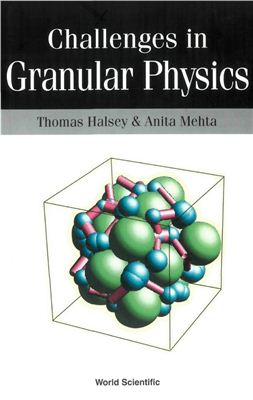World Scientific Publishing, 2002, Pages: 247
This handbook contains accounts of state-of-the-art approaches to the physics of granular matter, from a widely interdisciplinary and inteational set of experts in the field. The authors include theorists such as S.F. Edwards, J. Krug and J. Kurchan, and they seek to report current experimental approaches with, importantly, a detailed account of new techniques. The volume should serve as a useful manual for all researchers, both novice and experienced, who wish to get quickly directed to open questions in key aspects of this challenging and topical domain.
In this volume, the reader will see many examples of this special physics of granular systems. What are the properties of static packings of particles? The number of nearest neighbors seems to depend upon the coefficient of friction, or perhaps not. What determines the rheology of dense granular flows? Are they fundamentally a surface phenomenon, or is there a characteristic bulk rheology? What is the role of gravity in this rheology? Are "force chains" of strongly interacting particles fundamental to granular statics and dynamics, or are they an optical illusion with no special relevance? Is the concept of entropy fundamental to understanding the relaxation of granular materials, or is it an equilibrium idea out of place in the non-equilibrium world?
This handbook contains accounts of state-of-the-art approaches to the physics of granular matter, from a widely interdisciplinary and inteational set of experts in the field. The authors include theorists such as S.F. Edwards, J. Krug and J. Kurchan, and they seek to report current experimental approaches with, importantly, a detailed account of new techniques. The volume should serve as a useful manual for all researchers, both novice and experienced, who wish to get quickly directed to open questions in key aspects of this challenging and topical domain.
In this volume, the reader will see many examples of this special physics of granular systems. What are the properties of static packings of particles? The number of nearest neighbors seems to depend upon the coefficient of friction, or perhaps not. What determines the rheology of dense granular flows? Are they fundamentally a surface phenomenon, or is there a characteristic bulk rheology? What is the role of gravity in this rheology? Are "force chains" of strongly interacting particles fundamental to granular statics and dynamics, or are they an optical illusion with no special relevance? Is the concept of entropy fundamental to understanding the relaxation of granular materials, or is it an equilibrium idea out of place in the non-equilibrium world?

